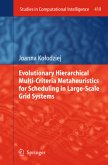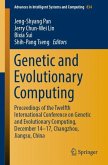Today's highly parameterized large-scale distributed computing systems may be composed of a large number of various components (computers, databases, etc) and must provide a wide range of services. The users of such systems, located at different (geographical or managerial) network cluster may have a limited access to the system's services and resources, and different, often conflicting, expectations and requirements. Moreover, the information and data processed in such dynamic environments may be incomplete, imprecise, fragmentary, and overloading. All of the above mentioned issues require some intelligent scalable methodologies for the management of the whole complex structure, which unfortunately may increase the energy consumption of such systems. An optimal energy utilization has reached to a point that many information technology (IT) managers and corporate executives are all up in arms to identify scalable solution that can reduce electricity consumption (so that the total cost of operation is minimized) of their respective large-scale computing systems and simultaneously improve upon or maintain the current throughput of the system.
This book in its eight chapters, addresses the fundamental issues related to the energy usage and the optimal low-cost system design in high performance ``green computing'' systems. The recent evolutionary and general metaheuristic-based solutions for energy optimization in data processing, scheduling, resource allocation, and communication in modern computational grids, could and network computing are presented along with several important conventional technologies to cover the hot topics from the fundamental theory of the ''green computing'' concept and to describe the basic architectures of systems. This book points out the potential application areas and provides detailed examples of application case studies in low-energy computational systems. The development trends and open research issuesare also outlined. All of those technologies have formed the foundation for the green computing that we know of today.
This book in its eight chapters, addresses the fundamental issues related to the energy usage and the optimal low-cost system design in high performance ``green computing'' systems. The recent evolutionary and general metaheuristic-based solutions for energy optimization in data processing, scheduling, resource allocation, and communication in modern computational grids, could and network computing are presented along with several important conventional technologies to cover the hot topics from the fundamental theory of the ''green computing'' concept and to describe the basic architectures of systems. This book points out the potential application areas and provides detailed examples of application case studies in low-energy computational systems. The development trends and open research issuesare also outlined. All of those technologies have formed the foundation for the green computing that we know of today.
From the reviews: "The editors and authors of this collection of papers intend to show the relevance of evolutionary computation in a set of established energy-saving applications ... . As a result, the relevance of the volume is ... to researchers in the same field, and to other researchers in green computing who are looking for approaches to solve optimization problems. The volume comprises eight chapters devoted to selected high-performance computing and network subsystem energy-saving efforts." (L.-F. Pau, ACM Computing Reviews, January, 2013)








